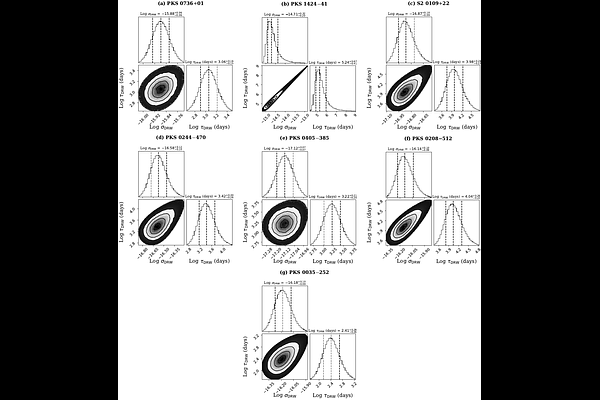Exploring Year-timescale Gamma-ray Quasi-Periodic Oscillations in Blazars: Evidence for Supermassive Binary Black Holes Scenario

Exploring Year-timescale Gamma-ray Quasi-Periodic Oscillations in Blazars: Evidence for Supermassive Binary Black Holes Scenario
Ajay Sharma, Sakshi Chaudhary, Aishwarya Sarath, Debanjan Bose
AbstractA comprehensive analysis of quasi-periodic oscillations (QPOs) in the gamma-ray emissions of blazars. Utilizing 15 years of Fermi-LAT observations of seven blazars in our sample, we identify both long-term and transient quasi-periodic oscillations in the gamma-ray light curves, with timescales ranging from a few months to years. These periodicities were detected using the Lomb-Scargle periodogram and REDFIT techniques. To robustly evaluate the statistical significance of the quasi-periodic signals observed in the Lomb-Scargle Periodograms, 30,000 synthetic $\gamma$-ray light curves were generated for each source using a stochastic model known as the Damped Random Walk (DRW) process. To investigate the physical origin of the observed gamma-ray QPOs with different timescales, we explore several plausible scenarios, with particular emphasis on a relativistic jet hosted by one of the black holes in a supermassive binary black hole system, jet precession, and helical motion of magnetized plasma blob within the jet. The $\gamma$-ray light curves exhibiting long-timescale quasi-periodic oscillations (QPOs) are analyzed within the framework of a supermassive binary black hole (SMBBH) model, employing a Markov Chain Monte Carlo (MCMC) approach, allowing us to constrain key physical parameters such as the jet Lorentz factor ($\Gamma$) and the viewing angle between the observer's line of sight ($\psi$) relative to the spin axis of SMBH.